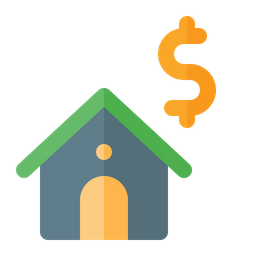My son’s first words were, “Cash Flow.” I corrected him – “Son, it’s POSITIVE cash flow!”
When you have negative cash flow, you are bleeding funds. You are paying out more in expenses than you are taking in as profit. That’s not how you want to operate when you’re investing in real estate properties. Sure, the loss is a write-off, but nobody wants to fork out cash to get a tax deduction!
Here are some ways that you can change the negative cash flow to a positive one:
Implement a Rent Increase. Too many small landlords keep their rents flat because they don’t want to lose tenants. This is a BIG mistake! Tenants expect you to raise the rent every year with inflation, especially now that inflation is a big factor in the economy and the cost of everything has gone up. Don’t be afraid of losing a tenant to a rent increase; if your competitors are raising rents, the tenant won’t move to pay the same or higher rents elsewhere. However, only increase it to the amount of the current market. Don’t overdo it, otherwise you may not have any tenants.
Enforce Late Fees. Too many small landlords accept checks several days beyond the lease’s grace period without charging a late fee. BIG MISTAKE! You are encouraging bad behavior by doing this, and you are also giving up extra income. If your state or local law allows it, charge a late fee, PLUS a per diem late fee for each day the rent is late.
Make the Tenants Pay the Utilities. This would relieve a burden from you. Besides, since they are living in your property, they will be using utilities every day. If you have multifamily properties where the units are not separately metered, implement a “RUBS” (Ratio Utility Billing System) program, which allows you to calculate what each tenant is using by square footage of the unit. RUBS are not allowed in every state, so check your local law.
Contest Your Property Tax Assessment. If the city or county assessed your property for taxes recently and raised the assessment, you may be able to contest it. Employ a good commercial broker or appraiser to see if you can contest the valuation (and thus the property tax amount) the locality is claiming. This could save you a bundle!
Reduce Your Insurance Premiums. Contact your insurance broker and see about increasing your deductible. If you have $1,000 deductible, you are paying a hefty premium; consider $2,000 or even $3,000 per claim. Let’s face it, small claims are usually not worth reporting anyway, because they will raise your rates in the future, especially for water damage claims. Also, make inquiries about getting a better deal for coverage on the property from other carriers.
Do Profitable Renovations. Some renovations to your properties will provide you with additional income. For example, extra bedrooms and baths, a garage, or a complete facelift of the interior. As a rule of thumb, you should spend $1.00 to get 20 cents back in rent. For example, if you do a $10,000 improvement, you should get $2,000 per year ($167/month) in additional rent. That’s a 20% return on your capital!
Don’t settle for negative cash flow – do something about it! Get creative and think “outside the box” on ways to reduce expenses and increase revenue.
